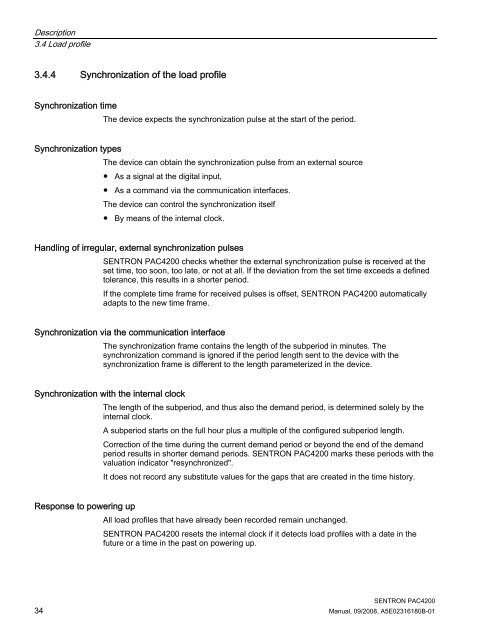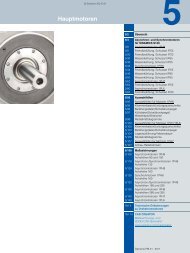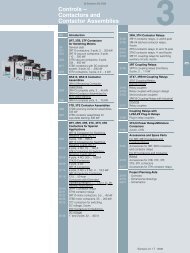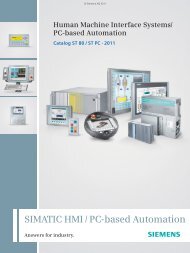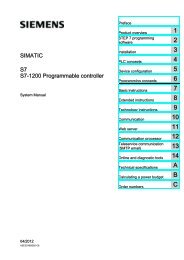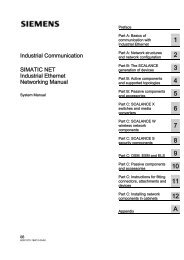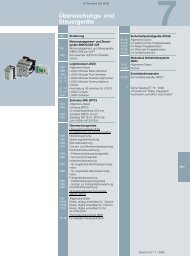Manual SENTRON Power Monitoring Device SENTRON PAC4200
Manual SENTRON Power Monitoring Device SENTRON PAC4200
Manual SENTRON Power Monitoring Device SENTRON PAC4200
Create successful ePaper yourself
Turn your PDF publications into a flip-book with our unique Google optimized e-Paper software.
Description<br />
3.4 Load profile<br />
3.4.4 Synchronization of the load profile<br />
Synchronization time<br />
Synchronization types<br />
The device expects the synchronization pulse at the start of the period.<br />
The device can obtain the synchronization pulse from an external source<br />
● As a signal at the digital input,<br />
● As a command via the communication interfaces.<br />
The device can control the synchronization itself<br />
● By means of the internal clock.<br />
Handling of irregular, external synchronization pulses<br />
<strong>SENTRON</strong> <strong>PAC4200</strong> checks whether the external synchronization pulse is received at the<br />
set time, too soon, too late, or not at all. If the deviation from the set time exceeds a defined<br />
tolerance, this results in a shorter period.<br />
If the complete time frame for received pulses is offset, <strong>SENTRON</strong> <strong>PAC4200</strong> automatically<br />
adapts to the new time frame.<br />
Synchronization via the communication interface<br />
The synchronization frame contains the length of the subperiod in minutes. The<br />
synchronization command is ignored if the period length sent to the device with the<br />
synchronization frame is different to the length parameterized in the device.<br />
Synchronization with the internal clock<br />
The length of the subperiod, and thus also the demand period, is determined solely by the<br />
internal clock.<br />
A subperiod starts on the full hour plus a multiple of the configured subperiod length.<br />
Correction of the time during the current demand period or beyond the end of the demand<br />
period results in shorter demand periods. <strong>SENTRON</strong> <strong>PAC4200</strong> marks these periods with the<br />
valuation indicator "resynchronized".<br />
It does not record any substitute values for the gaps that are created in the time history.<br />
Response to powering up<br />
All load profiles that have already been recorded remain unchanged.<br />
<strong>SENTRON</strong> <strong>PAC4200</strong> resets the internal clock if it detects load profiles with a date in the<br />
future or a time in the past on powering up.<br />
<strong>SENTRON</strong> <strong>PAC4200</strong><br />
34 <strong>Manual</strong>, 09/2008, A5E02316180B-01


